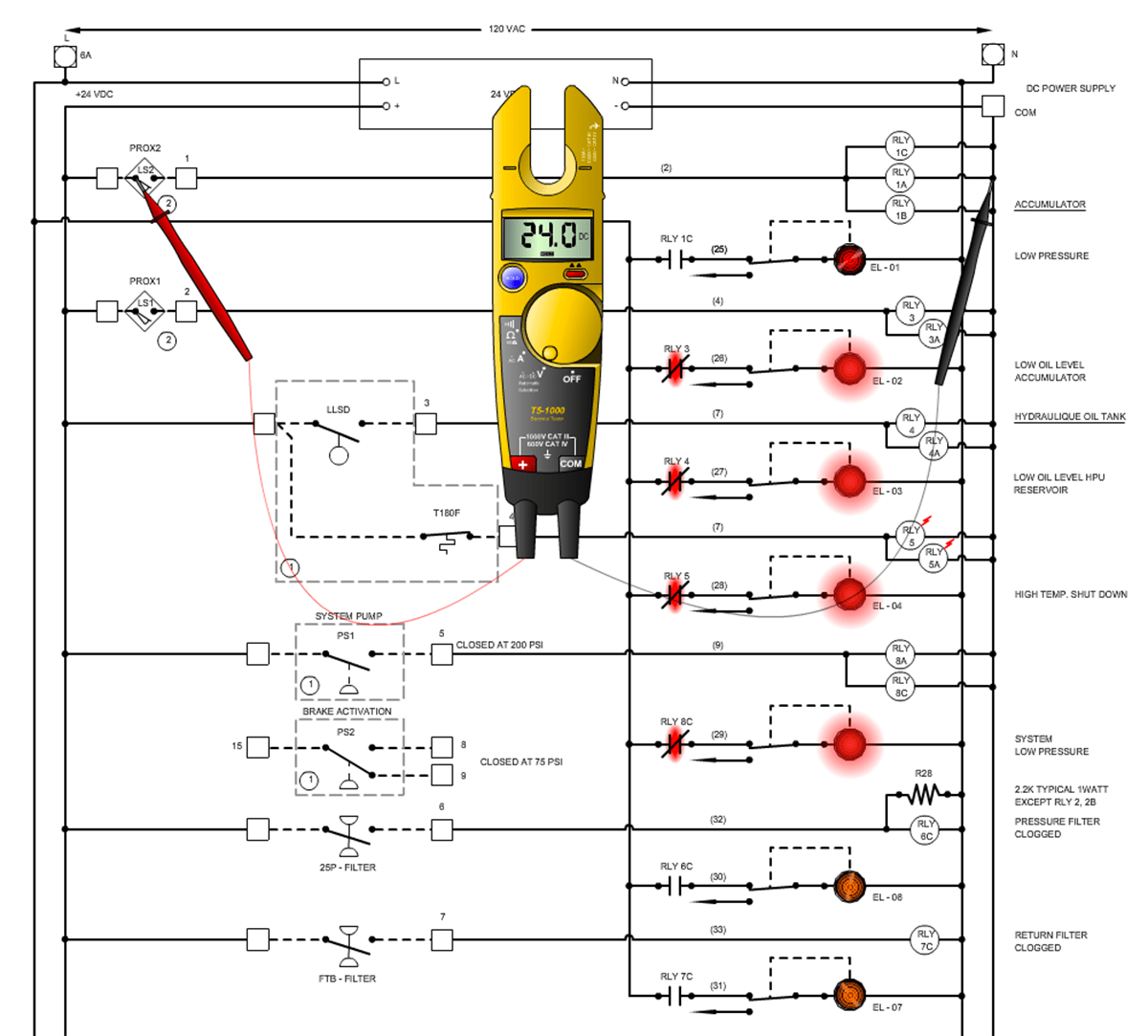Efficient electrical system troubleshooting you can trust.
Efficient electrical system troubleshooting you can trust.
Blog Article
Leading Tips for Effective Electrical System Troubleshooting
Repairing electrical systems calls for a systematic method, based in a detailed understanding of electric concepts and safety protocols. By acquainting oneself with circuit elements, utilizing essential devices, and sticking to a structured assessment technique, specialists can properly identify and fix concerns. The subtleties of efficient troubleshooting expand past plain technical understanding; comprehending just how to record searchings for and focus on safety can significantly influence results. As we explore these crucial elements better, it comes to be clear that grasping this procedure is not simply beneficial yet essential for success in the area.
Understand the Essentials
Understanding the fundamentals of electric systems is vital for reliable troubleshooting, as a solid foundation permits technicians to identify and solve issues extra effectively. A comprehensive understanding of electric concepts, such as voltage, existing, resistance, and power, is important in recognizing the root creates of issues. Voltage is the electric possible distinction that drives present with a circuit, while resistance opposes the circulation of current, influencing the overall performance of the system.
Knowledge with circuit elements, consisting of resistors, capacitors, diodes, and switches over, is additionally paramount. Each element plays an unique role in circuit actions and can affect performance when malfunctioning. Furthermore, comprehending series and parallel circuit configurations is vital, as these setups affect the distribution of voltage and existing within the system.
Specialists need to be mindful of prospective risks, such as shock and brief circuits, to apply risk-free troubleshooting practices. By mastering these fundamental principles, technicians boost their capability to conduct efficient diagnostics and fixings, eventually leading to improved performance and reliability of electrical systems (electrical system troubleshooting).
Gather Necessary Tools
Effective troubleshooting of electric systems needs the ideal collection of devices to diagnose and resolve concerns accurately. A fully equipped service technician can considerably improve effectiveness and performance in determining troubles. Crucial tools consist of a multimeter, which determines voltage, existing, and resistance, enabling accurate evaluations of electric parts. Clamp meters are likewise valuable for gauging present without separating the circuit, making sure safety and convenience.
Furthermore, insulated hand devices such as screwdrivers, pliers, and cord strippers are important for securely controling electrical connections. It is additionally suggested to have a circuit tester on hand to confirm the presence of voltage in electrical outlets and wires. For more facility systems, a thermal imaging video camera can help discover overheating elements, showing prospective failures.

Adhere To a Methodical Approach
Having collected the proper devices, the following action in troubleshooting electric systems is to adhere to a systematic strategy. A methodical strategy ensures that technicians can determine faults effectively and properly, reducing downtime and preventing unneeded repair services.
Begin by evaluating the system's schematic representations and specifications. Comprehending the layout and functional criteria will offer context for identifying issues. Next, isolate the trouble area by using a procedure of removal. This includes checking each component systematically, beginning with the power source and functioning in the direction of the lots.
Make use of screening tools, such as multimeters and oscilloscopes, my site to gather objective information concerning voltage, existing, and resistance at different points within the system. This empirical proof will assist your troubleshooting initiatives and aid to verify or eliminate potential reasons of failing.
Furthermore, take into consideration environmental aspects that might affect the system's performance, such as temperature fluctuations or dampness ingress. A comprehensive evaluation of circuitry, links, and parts will ensure that all possibilities are made up.
Document Your Findings
Comprehensive documents is important in the repairing procedure of electric systems. This technique not just help in recognizing the root reason of the trouble however likewise offers as a recommendation for future fixing efforts.

In addition, keeping a log of components replaced or repair services executed is very useful. This details supports supply monitoring and can aid examine the durability and reliability of details components.
Ultimately, the documents procedure need to be extensive yet succinct, enabling very easy access and testimonial - electrical system troubleshooting. By focusing on comprehensive paperwork, service technicians can create a useful understanding Resources base that not only aids in existing troubleshooting but also equips future upkeep efforts, consequently enhancing general system integrity

Prioritize Precaution
Identifying the fundamental threats linked with electrical systems is essential for making sure safety during troubleshooting. Electric shock, burns, and tools damages are just a few of the possible threats that professionals encounter. Focusing on security measures is not just a lawful obligation however likewise an ethical vital that safeguards both the professional and the surrounding environment.
Prior to starting any troubleshooting task, professionals must don suitable individual safety devices (PPE), consisting of shielded gloves, shatterproof glass, and flame-resistant apparel. Ensuring that the workspace is completely dry and devoid of mess can dramatically reduce the risk of crashes. Moreover, it is vital to de-energize circuits before starting any job, confirming that they are not endure the usage of a multimeter or voltage tester.
Developing clear interaction methods with employee is likewise important; this makes certain that everyone knows prospective hazards and the status of the electric system being dealt with. Last but not least, having an emergency situation reaction plan in area can confirm important in the occasion of a case. By her response focusing on precaution, specialists can effectively mitigate dangers and foster a much safer office.
Final Thought
Effective electrical system troubleshooting depends on an extensive understanding of essential concepts and a systematic approach. By gathering essential devices, adhering to organized examination strategies, and thoroughly documenting findings, the fixing procedure ends up being extra efficient and trustworthy. Prioritizing security measures ensures the health of individuals involved and the honesty of the electrical system. Implementing these strategies will enhance the fixing experience, causing quicker resolutions and boosted operational effectiveness in electric systems.
Report this page